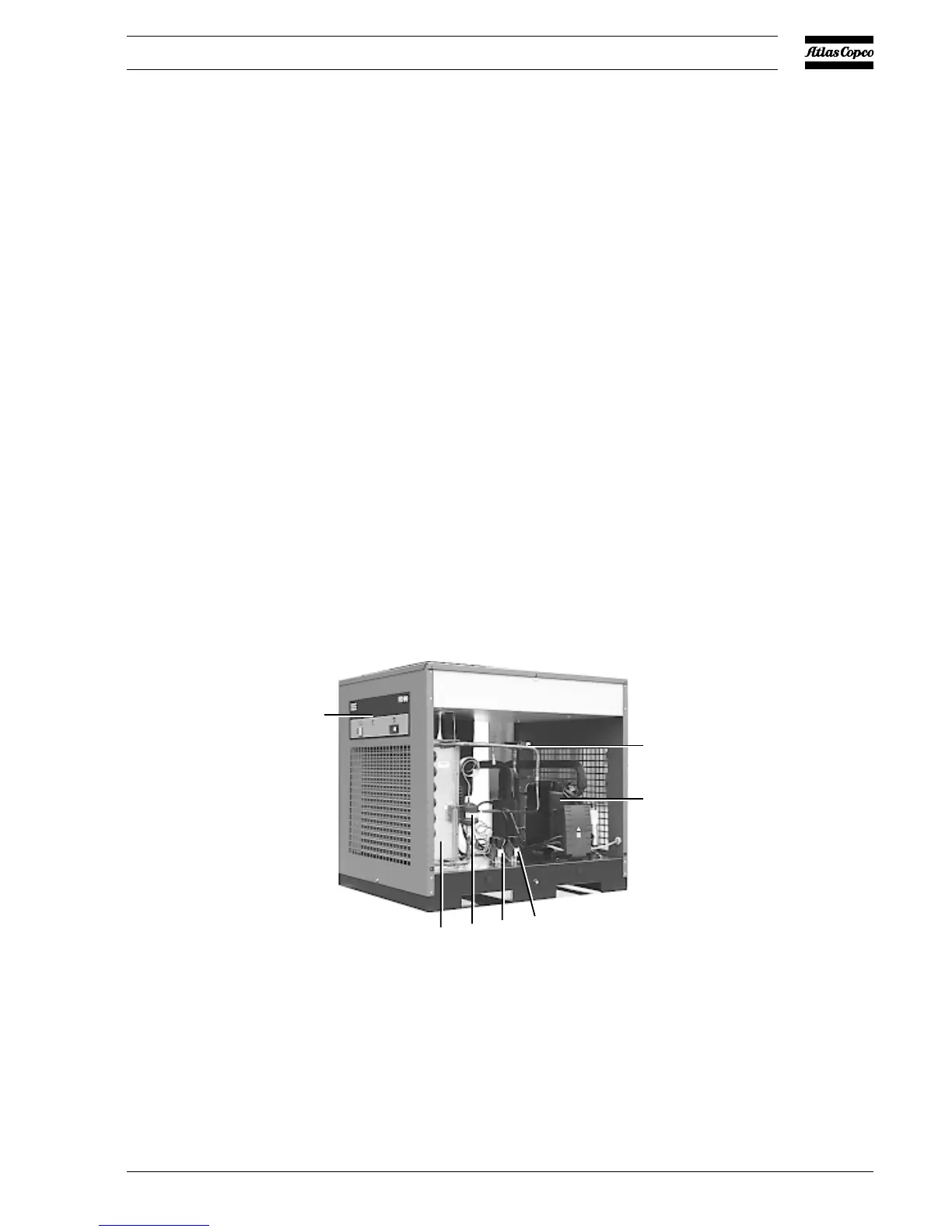2920 1390 02
3
Instruction book
1 LEADING PARTICULARS
1.1 General description
The FD air dryers remove moisture from compressed air by
cooling the air to near freezing point. This causes water to
condense. The condensate is automatically drained. The air is
warmed up before leaving the dryer.
1.2 Air circuit (Fig. 1.2)
Compressed air enters heat exchanger (13) and is cooled by
the outgoing, cold, dried air. Water in the incoming air starts to
condense. The air then flows through heat exchanger/
evaporator (11) where the refrigerant evaporates causing the
air to be further cooled to close to the evaporating temperature
of the refrigerant. More water in the air condenses. The cold
air then flows through separator (3) where all the condensate
is separated from the air. The condensate collects in condensate
trap (4) and is automatically drained. The cold, dried air flows
through heat exchanger (13), where it is warmed up by the
incoming air to approx. 10 degrees Celsius below the incoming
air temperature. Condensation in the air net cannot occur unless
the air is cooled to below the pressure dewpoint indicated by
gauge (1).
1.3 Refrigeration circuit (Fig. 1.2)
Compressor (M1) delivers hot, high-pressure refrigerant gas
which flows through condenser (9) where most of the refrigerant
condenses.
The liquid flows through liquid refrigerant dryer/filter (12) to
capillary tube (7). The refrigerant leaves the capillary tube at
evaporating pressure.
The refrigerant enters evaporator (11) where it withdraws heat
from the compressed air by further evaporation at constant
pressure. The heated refrigerant leaves the evaporator and is
sucked in by the compressor via accumulator (14).
M1. Refrigerant compressor
S3. Fan control switch
S7. High pressure shut down switch
1. Control panel
2. Condenser
3. Hot gas by-pass valve
4. Liquid refrigerant dryer/filter
Fig. 1.1 General view of FD90
2
4
S7
S3
1
3
M1
50643F

